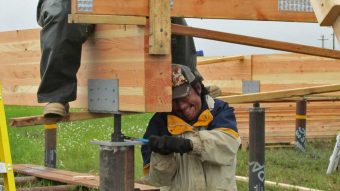Energy Recovery Ventilators in Cold Climates
Energy Recovery Ventilators (ERVs) exchange stale indoor air with fresh outdoor air, recovering heat and moisture from the exhaust air and transferring it to supply air. Heat Recovery Ventilators (HRVs), on the other hand, only recover heat from exhaust air and thus dry out the indoor air. In a cold dry climate like Interior Alaska, ERVs could help improve indoor air quality by adding moisture to the air.
Part 1
An initial study looked at eight different ERVs in Fairbanks over one winter to see whether they were more likely to freeze up by handling moisture in the core. None of them froze, suggesting ERVs could be a good option for improving air quality in Interior Alaska.
Part 2
A followup project compared ERV to HRV performance. The ERVs improved humidity levels in the buildings and resisted freezing better than HRVs.











